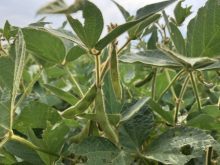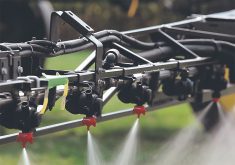Susan Reynolds hopes children will share their safety lessons with their families.
The executive director of programming for the Progressive Agriculture Foundation said her group tries to reach children through one-day events designed to keep them safe at home or on a farm or ranch.
The hands-on workshops on safe farm practices are designed to reach eight- to 13-year-olds but can also be tailored to younger children, families and the broader community.
“We do it because we are wanting to catch them young so that they’re aware of safety from as young as possible. We know that they will then go home and they will share what they learned with their parents.
Read Also

No special crop fireworks expected
farmers should not expect fireworks in the special crops market due to ample supplies.
“It’s like seatbelts. A lot of us wear seatbelts now because the kids told us to.”
Reynolds said people in the community get excited about these days and want to help the kids, but the instructors benefit also.
“Really everyone who helps with the safety day also learns.
“Our program is really shared knowledge. … Every time we do a training of volunteers, we all learn something.”
Paradise Hill School in west-central Saskatchewan has organized an annual wellness and safety day since 2001.
This year, they invited students from Loon Lake, St. Walburg, Lloydminster and Edam to join their sessions ranging from emergency preparedness and safe driving practices to drugs and goal setting.
“The response from the kids was very good, very positive,” said Lorna Merkosky, wellness co-ordinator at the Edam, Sask., kindergarten to Grade 12 school.
Bonnie Midgley of the Paradise Hill Home and School Association said Paradise Hill has a volunteer group that raises money to pay for the day.
“The community supporting it is what partly drives us to continue on,” she said.
“We’re a very aggressive group in fundraising so if we think the speaker is worth the money, we’ll bring them,” she said.
“There’s always positive feedback and we can access from a wide variety.”
The schedule varies each year and is based on suggestions for speakers, availability and cost. Continuity, age appropriate presentations and building on information year after year is the goal for the day, said Midgley.
She said it’s difficult to assess the impact of the day on the lives of students.
“Everybody asks ‘well, how do you know if you’re successful,’ and of course you never know the accidents that don’t happen, or the bad choices.”
Merkowsky said the event looked at the impact of choices and discussed timely issues, including road-related offences.
“They can’t hear that message enough. Drinking and driving kills, driving dangerously kills. What you decide to do in your young life will have life lasting consequences,” she said.
“It was very hushed in there while some of the speakers were up there. They were very in tune with what they were saying,” she said.
“I personally feel some of these messages, the kids can’t get enough of. Obviously they do, too.”















